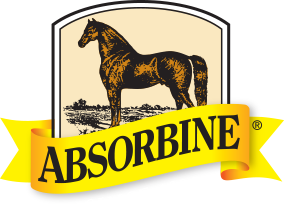 Hoof Nutrition Intelligence is a twice-a-month web segment that is designed to add to the education of footcare professionals when it comes to effectively feeding the hoof. The goal of this web-exclusive feature is to zero in on specific areas of hoof nutrition and avoid broad-based articles that simply look at the overall equine feeding situation.
Hoof Nutrition Intelligence is a twice-a-month web segment that is designed to add to the education of footcare professionals when it comes to effectively feeding the hoof. The goal of this web-exclusive feature is to zero in on specific areas of hoof nutrition and avoid broad-based articles that simply look at the overall equine feeding situation.
Below you will find Part 1 of the latest question and answer installment that you can share with your footcare clients.
Q: Just how important is methionine for hoof growth and health?
By Melyni Worth
A: Methionine (Met) is an amino acid, which is one of the building blocks of protein. One of Mets special features is that the molecule incorporates sulfur. The only other amino acid to incorporate sulfur is cystine (Cys).
The main protein in hoof tissue is keratin, which has a special structure called a cystine-cysteine bond. This bond is formed when the sulfur atoms in the amino acid molecules bind with each other across the protein strands.
This cross-linking gives the protein strands considerable stability and strength. This sulfur-sulfur cross-linking is common in most of the structural proteins in the body, but is most obviously apparent in the keratin strands of the hoof and hair.
The liver is able to synthesize a number of amino acids, but since it is unable to incorporate sulfur into amino acids, they have to be supplied in the diet. However, the liver is able to use the sulfur found in the amino acid Met and convert it to Cys. Thus, we say that Met has a sparing effect on Cys. As long as there is enough Met in the diet to be available for conversion, you do not need to worry about the amount of Cys.
As the horn of the hoof wall grows continuously, it requires a constant supply of Cys, and there is no body storage of either Cys or Met (except in the other structural proteins). Hence, it is important that the incoming feed contains enough Met or (Met and Cys) to meet the demands of the growing hoof horn.
If the supply is too low, then horn production slows and can even stop, which is seen as a weakening or thinning of the hoof wall that takes place at the time of low levels of Met and Cys. A long-term deprivation of Met or Cys can result in stunted growth and poor muscle development, as well as weak, shelly horn and slow growing hair and hoof. The hair coat will be harsh, poor in appearance and slow to grow and replace when rubbed off.
Nutritionists look at the Met supply as an indicator of sufficient sulfur containing protein. They don’t worry too much about the Cys supply, relying on the conversion of Met to Cys to keep up with the body’s demand.
The best sources of Met or Cys are animal proteins, egg whites, whey protein, fishmeal, etc. Humans receive the bulk of their needs with these compounds from fish, eggs, meat and dairy. However, horses rarely eat animal proteins and their normal diet is plant material, which is usually low in Met and Cys.
You can improve the Met and Cys supply by feeding one of the acceptable protein sources such as whey protein or fishmeal to your horses. The usual method of supplying protein to horses is through feeding alfalfa hay or soybean meal. This will help some, but does not have the best supply of Met itself and thus does not alleviate the shortage unless fed in large quantities.
Dried distillers grains are another protein source commonly fed to horses, with an acceptable Met content, but these are not always palatable. Oil seed meals, such as canola meal, have a reasonable amount of Met and can be a useful source.
It is also possible to add the straight amino acid in its pure form to a horse’s ration, but the most practical and reasonable way cost wise is to add whey protein or fishmeal to meet the horse’s needs.
Melyni Worth is the founder, president and director of research and development for Foxden Equine in Stuarts Draft, Va. A native of Great Britain, she has a PhD in equine nutrition and exercise physiology from Virginia Tech.
Hoof Nutrition Intelligence is brought to you by W.F. Young Co. (Absorbine). 
Like many significant achievements, Absorbine® grew out of humble beginnings—and through the tenacity of someone willing to question the status quo. In this case, it was a young woman in late 19th-century Massachusetts: Mary Ida Young. Her husband, Wilbur Fenelon Young, was an enterprising piano deliveryman who relied on the couple’s team of horses to make deliveries throughout the Northeast. Inspired by Mary Ida and Wilbur’s vision, Absorbine® has continued to add innovative products throughout the years — products used every day by horse owners around the world. Which is why, since 1892, we’ve been The Horse World’s Most Trusted Name®.
Click here to read Part 2 of the January 1, 2016 installment: Won’t a well-balanced ration provide the necessary minerals and vitamins needed for quality hoof growth?
Click here to read more installments of Hoof Nutrition Intelligence.

Post a comment
Report Abusive Comment